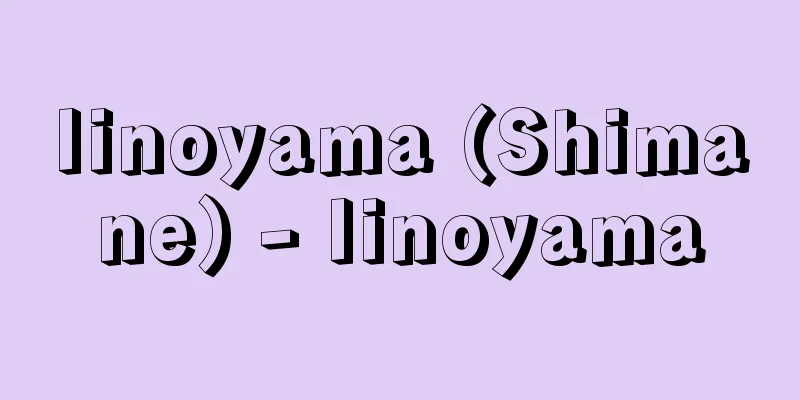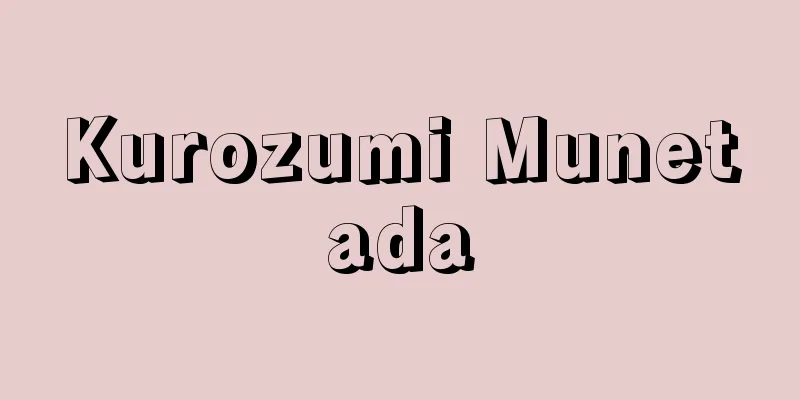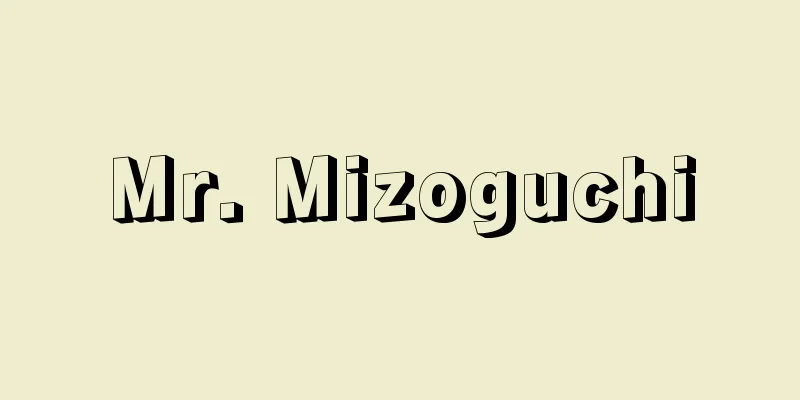Japan Art Academy

|
A Japanese painting group. The exhibitions they sponsor are called "Inten" for short. Okakura Tenshin (Kakuzo) was expelled from his position as principal of Tokyo Fine Arts School in March 1898 (Meiji 31), and on October 10 of the same year, he opened the Japan Art Institute in Hatsunecho, Yanaka, Tokyo. Centered around Hashimoto Gaho, who resigned from Tokyo Fine Arts School to follow Tenshin, and 17 other artists, they established three departments for research, production, and exhibition in Japanese painting, sculpture, architectural decoration, and crafts, and published the journal "Nihon Bijutsu." At the same time, they joined forces with the Japan Painting Association to hold the first exhibition, and continued this format until 1903. During that time, Yokoyama Taikan, Hishida Shunso, and others actively adopted Western painting techniques and produced innovative works, but they were not accepted by the public, which led to the Japan Art Institute's financial difficulties. Finally, in November 1906, the Bijutsuin moved its painting research institute to Izura in Ibaraki Prefecture, significantly downsizing the scale of its activities, and its activities became mere nameless. After that, in 1913 (Taisho 2), Tenshin passed away, and the following year Taikan was removed from the Bunten exhibition judging committee. This was the catalyst for the revival of the Bijutsuin, with Taikan, Shimomura Kanzan, and other young artists including Imamura Shiko, Kosugi Misei (Hoan), and Yasuda Yukihiko joining the group. In September 1914, the opening ceremony was held at the institute established in Kami-misaki Minamimachi, Yanaka, followed by the first revived exhibition in October. One after another, the group added Kobayashi Kokei, Maeda Seison, Hayami Gyoshu and others to its membership, aiming to establish a new style of Japanese painting, and became an influential independent group even surpassing the Bunten Exhibition. The Western-style painting department, which was established when the Inten Exhibition was first revived, was dissolved in 1920 (Taisho 9), and the sculpture department in 1961 (Showa 36). The group was temporarily suspended during World War II, but currently holds exhibitions in spring and autumn as a Japanese painting group. [Eriko Saeki] Source: Shogakukan Encyclopedia Nipponica About Encyclopedia Nipponica Information | Legend |
|
日本画団体。その主催する展覧会を「院展」と略称する。岡倉天心(覚三)は1898年(明治31)3月、東京美術学校の校長を排斥され、同年10月10日東京谷中(やなか)初音町に日本美術院を開設。天心に殉じて東京美術学校を辞職した橋本雅邦(がほう)ほか17名の作家を中心に、日本画、彫刻、建築装飾、工芸における研究、制作、展覧の三部を設置し、機関誌『日本美術』を発行した。同時に日本絵画協会と連合して第1回展を開催、以後1903年までこの方式を継続。その間、横山大観、菱田春草(ひしだしゅんそう)らは西洋画法を積極的に摂取し、革新的傾向の作品を発表したが、一般には認められず日本美術院の経営不振を招くに至った。そしてついに1906年11月、美術院は茨城県五浦(いづら)に絵画研究所を移転、大幅な規模縮小を行い、その活動は有名無実となった。その後1913年(大正2)天心が没し、翌年大観が文展審査員より除かれたのを契機として、大観、下村観山(しもむらかんざん)を中心に今村紫紅(しこう)、小杉未醒(みせい)(放庵(ほうあん))、安田靫彦(ゆきひこ)らの若手作家が加わり、美術院の再興が図られた。1914年9月谷中上三崎南町に設立された研究所で開院式を挙行、続いて10月再興第1回展を開催。小林古径(こけい)、前田青邨(せいそん)、速水御舟(はやみぎょしゅう)などを次々と同人に加え、新日本画の樹立を目ざし、文展をしのぐほどの有力な在野団体として活動した。なお、再興院展発足に際し設けられた洋画部は1920年(大正9)に、彫塑部は61年(昭和36)に解散、第二次世界大戦中一時休会したが、現在は日本画団体として春秋二季に展覧会を開催。 [佐伯英里子] 出典 小学館 日本大百科全書(ニッポニカ)日本大百科全書(ニッポニカ)について 情報 | 凡例 |
<<: Japan Standard Time - Nihonhyojunji
Recommend
Kawaji [Hot Spring] - Kawaji
This hot spring wells up at the confluence of the ...
Indian Tiger - Indotora
...The largest subspecies is the Siberian tiger (...
Yin and Yang
〘Noun〙① Two types of energy that exist between hea...
Vasconcelos, José
Born: January 28, 1882 in Oaxaca Died: June 30, 19...
Kora
...They once lived in large numbers in South Afri...
Early adolescence
…From the perspective of developmental psychology...
Collection of Poems of Martyrdom
Sato Haruo's first collection of poems. Publi...
Theory of function of many variables
A field of function theory that deals with functio...
Serres, J.de (English spelling) SerresJde
…On the other hand, he converted to Calvinism ear...
Travel Diary - Ryokouki
〘 noun 〙 A record of various things such as what o...
Alkiphrōn (English spelling)
A 2nd-century Greek author who imitated the episto...
Heikichi Ogawa
A politician from the late Meiji to early Showa p...
Bingham, GC (English spelling) BinghamGC
…In the second half of the 19th century, the focu...
Constitutional Movement (English spelling)
A movement demanding the immediate transition of t...
Mor(o) van Dashorst, A. (English spelling) Mor van Dashorst A
…After this, many Romanist painters appeared who ...









